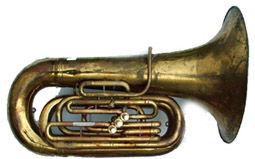Article by Idit fisterman/shazar
“Mido Mountain” is a traditional Chinese melody brought into modern concert life through performances by the Silkroad Ensemble, led by cellist Yo-Yo Ma. While its exact origin in Chinese folk tradition is elusive, the piece captures a meditative beauty and cultural depth that allows listeners to travel through sound to a remote peak in the imagination.
Musically, the piece is built upon a simple but evocative melody, shaped by traditional Chinese modes and timbres. In the Silkroad version, one hears a blending of instruments from different traditions: erhu and mouth organ mix with double bass, cello, percussion, and tabla. The arrangement invites subtle interplay between the folk character of the melody and the richness that comes from chamber ensemble textures. Instruments respond to each other with restraint and space, allowing the melody to breathe while supporting it with delicate rhythmic undercurrents.
Recording history shows “Mido Mountain” laid down by the Silkroad Ensemble around 2001, in studios in New York. Its duration hovers close to four minutes, a compact offering that nevertheless opens into wide expressive territory. Though named “Chinese Traditional,” the track reveals the Ensemble’s interest in cross-cultural dialogue more than strict preservation. It preserves tradition while inviting reinterpretation. Mido Mountain arrangement for Piano Trio is included in the collection of Mido Mountain for chamber music ensemble by composer Ofer Shelley.
For listeners, “Mido Mountain” serves as both comfort and discovery. It connects to Chinese musical roots but also to a more global aesthetic where solo voice, folk impulse, and ensemble color converge. The piece has become part of the repertoire of world fusion and modern classical crossover. It’s not only a representation of tradition but also proof that folk melody, carried into new settings, can gain fresh resonance. Through “Mido Mountain,” audiences are reminded that songs without known authors can still move many, and that in the meeting of different musical approaches, art is renewed.
“Mido Mountain” is a traditional Chinese melody brought into modern concert life through performances by the Silkroad Ensemble, led by cellist Yo-Yo Ma. While its exact origin in Chinese folk tradition is elusive, the piece captures a meditative beauty and cultural depth that allows listeners to travel through sound to a remote peak in the imagination. Musically, the piece is built upon a simple but evocative melody, shaped by traditional Chinese modes and timbres. In the Silkroad version, one hears a blending of instruments from different traditions: erhu and mouth organ mix with double bass, cello, percussion, and tabla. The arrangement invites subtle interplay between the folk character of the melody and the richness that comes from chamber ensemble textures. Instruments respond to each other with restraint and space, allowing the melody to breathe while supporting it with delicate rhythmic undercurrents.
Recording history shows “Mido Mountain” laid down by the Silkroad Ensemble around 2001, in studios in New York. Its duration hovers close to four minutes, a compact offering that nevertheless opens into wide expressive territory. Though named “Chinese Traditional,” the track reveals the Ensemble’s interest in cross-cultural dialogue more than strict preservation. It preserves tradition while inviting reinterpretation. Mido Mountain arrangement for Piano Trio is included in the collection of Mido Mountain for chamber music ensemble by composer Ofer Shelley.
For listeners, “Mido Mountain” serves as both comfort and discovery. It connects to Chinese musical roots but also to a more global aesthetic where solo voice, folk impulse, and ensemble color converge. The piece has become part of the repertoire of world fusion and modern classical crossover. It’s not only a representation of tradition but also proof that folk melody, carried into new settings, can gain fresh resonance. Through “Mido Mountain,” audiences are reminded that songs without known authors can still move many, and that in the meeting of different musical approaches, art is renewed.


